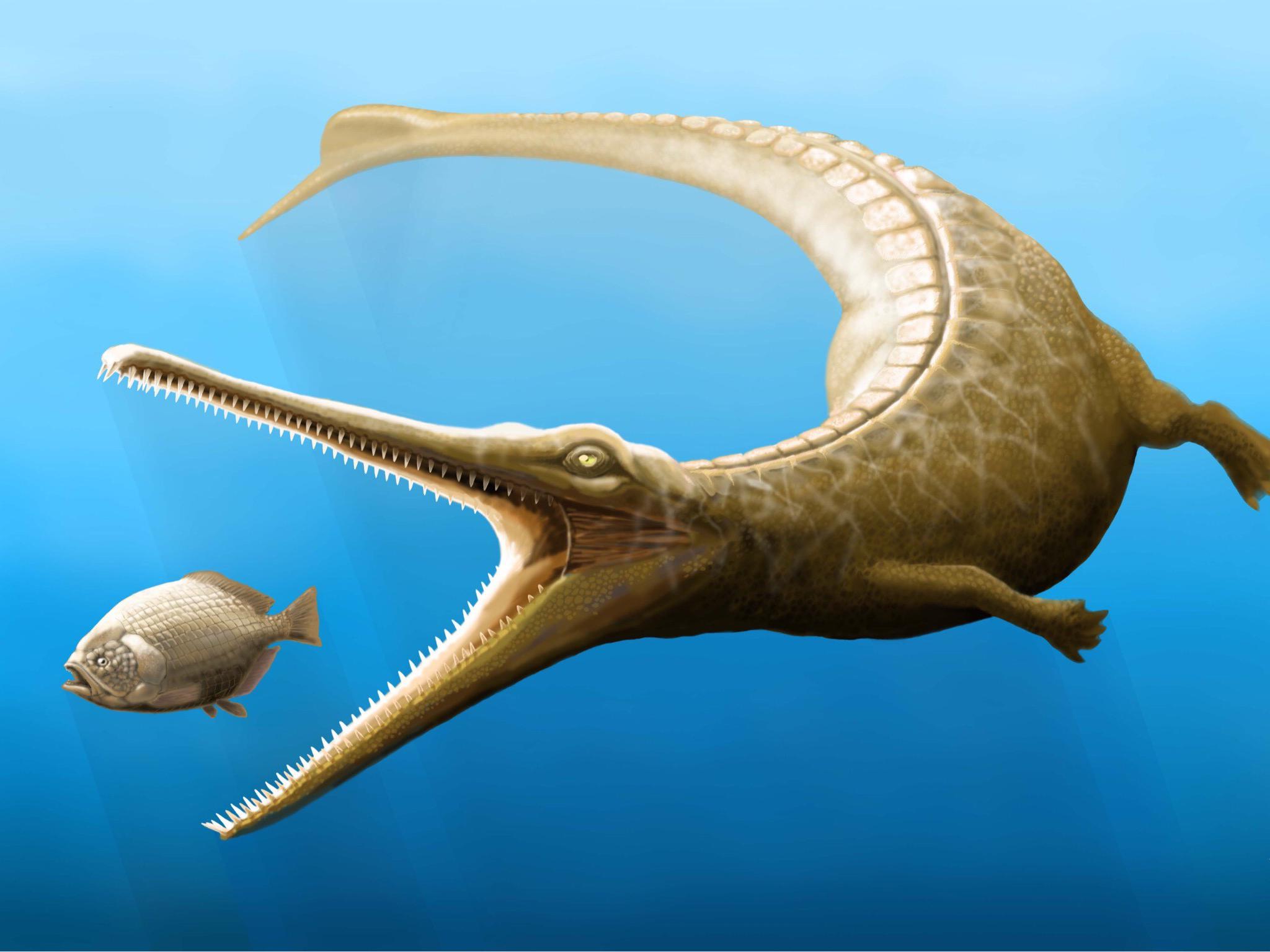Jurassic crocodile ‘missing link’ fossil reveals how ancient reptiles evolved into dolphin-like animals
New species is evidence of transition between land-dwelling reptiles and dolphin-like forms

A “missing link” from the crocodile family tree has been identified from a fossil in a Budapest museum.
The 180 million-year-old specimen has helped scientists understand how a group of ancient crocodiles branched off from the rest of the family and evolved into dolphin-like creatures.
During the Jurassic period when this marine predator prowled the oceans, two forms of crocodiles existed on Earth.
One group was very similar to the crocodiles still alive today, with bony armour covering much of their bodies and limbs adapted for walking on the land.
The other group lacked armour, and instead had tail fins and flippers similar to those found on modern marine mammals, which allowed them to traverse their underwater habitats with ease.
The new species appears to be a transitional form between these two groups. Like the land forms it is covered in scaly armour, but it also possesses the tail fin found in their dolphin-like cousins.

“This fossil provides a unique insight into how crocodiles began evolving into dolphin and killer whale-like forms more than 180 million years ago,” said Dr Mark Young, a geoscientist at the University of Edinburgh who worked on the specimen.
“The presence of both bony armour and a tail fin highlights the remarkable diversity of Jurassic-era crocodiles.”
The ancient crocodile has been named Magyarosuchus fitosi in honour of the amateur collector who discovered it – Attila Fitos.
Unearthed on a mountain range in northwest Hungary in 1996 and subsequently kept in a Budapest museum, the fossil consists of a few fragments including pieces of pelvis, jaw and backbone.
A team of palaeontologists studying these fragments noticed one of the vertebrae looked unusual, and closer observation suggested it had formed part of a tail fin.
The study documenting the new discovery was published in the journal PeerJ.
The researchers said the new discovery is evidence of the “mosaic” of different adaptations found in ancient crocodiles from the Jurassic period.
Join our commenting forum
Join thought-provoking conversations, follow other Independent readers and see their replies
Comments
Bookmark popover
Removed from bookmarks